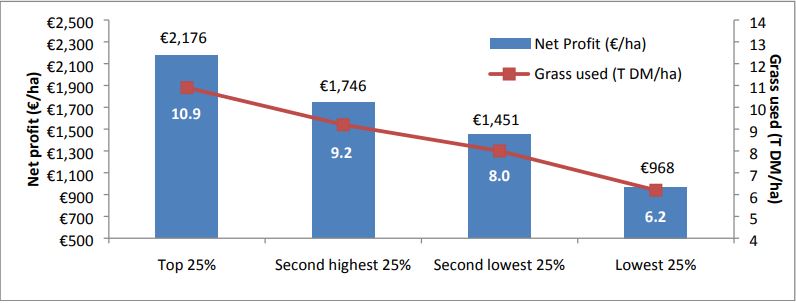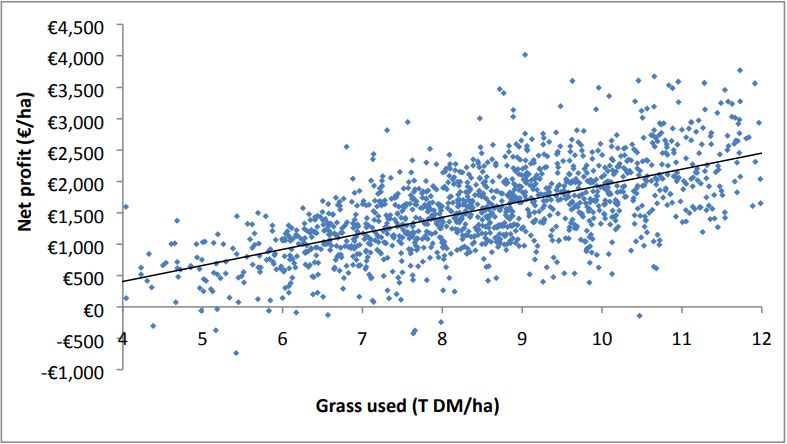The top spring-calving herds are utilising 2.3t DM/ha or 27% more grass than the average spring milk producer, according to the Teagasc 2018 profit monitor analysis.
The analysis was based on a group of 1,390 spring-calving dairy farmers with the top 25% representing farmers ranked by grass utilised per hectare – and then compared to the average spring milk producers.
The top farmers also produced 4% more milk solids per cow or 18kg of MS/cow more, while also producing more milk solids per hectare – 245kg of MS/ha more – but by virtue of their higher stocking rate of +0.43 livestock units (LU)/ha.
In terms of the purchased feed cost, it was 8% lower per cow, by €34/cow on the top dairy farms with 4.1t DM/cow utilised compared to 3.8t DM/cow utilised on the average dairy farm.
Looking at the profitability of these top farms, in comparison to the average farm, overall the farm net profit was €617/ha higher on the top farms – or by 40%.
When broken into quartiles, it is clear that as grass utilised goes up so does profitability per hectare. Reinforcing what Teagasc has been preaching, as grass utilisation increases so does farm profitability.
The difference in net profit per hectare between farmers utilising, on average, 6.2t/ha and those utilising 10.9t/ha is a massive €1,208. For a 50ha farm, that is the difference of €60,400.
The scatter plot below permits the association between grass used per hectare and net profit per hectare to be estimated.
Based on this analysis, Teagasc estimated that every additional tonne of grass utilised per hectare was associated with an increase in profit of €256 in 2018.
These results clearly show the importance of growing and utilising as much grass as possible on farms – for greater farm profitability and sustainability.
Obviously, depending on soil type this can be a lot easier said than done on some farms, but through better grassland management and adequate grazing infrastructure grass utilisation can easily be improved on farms.



